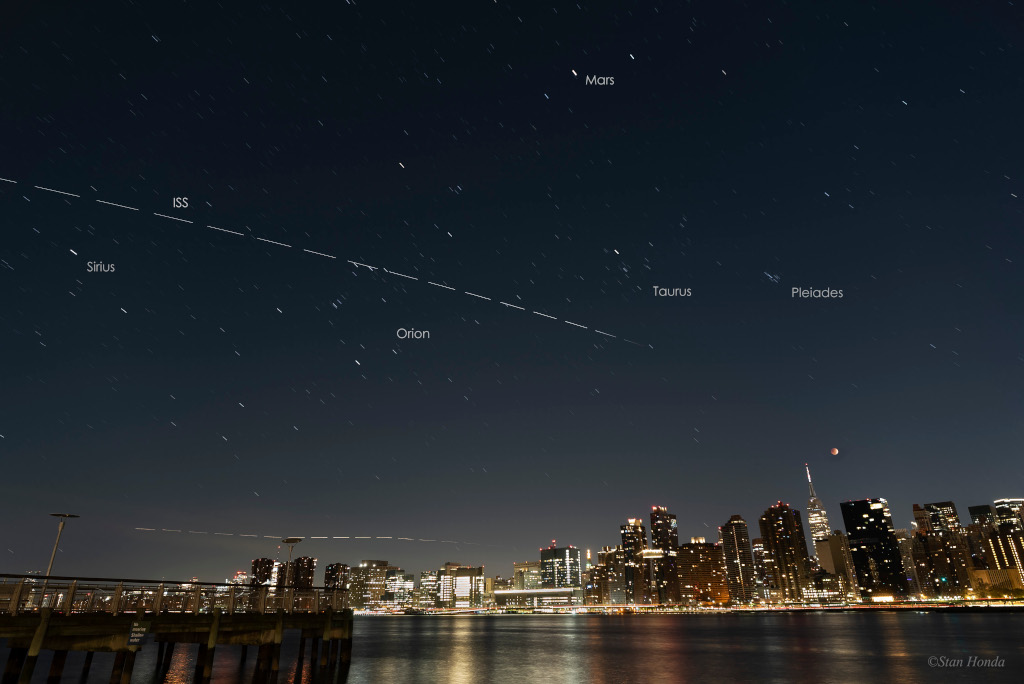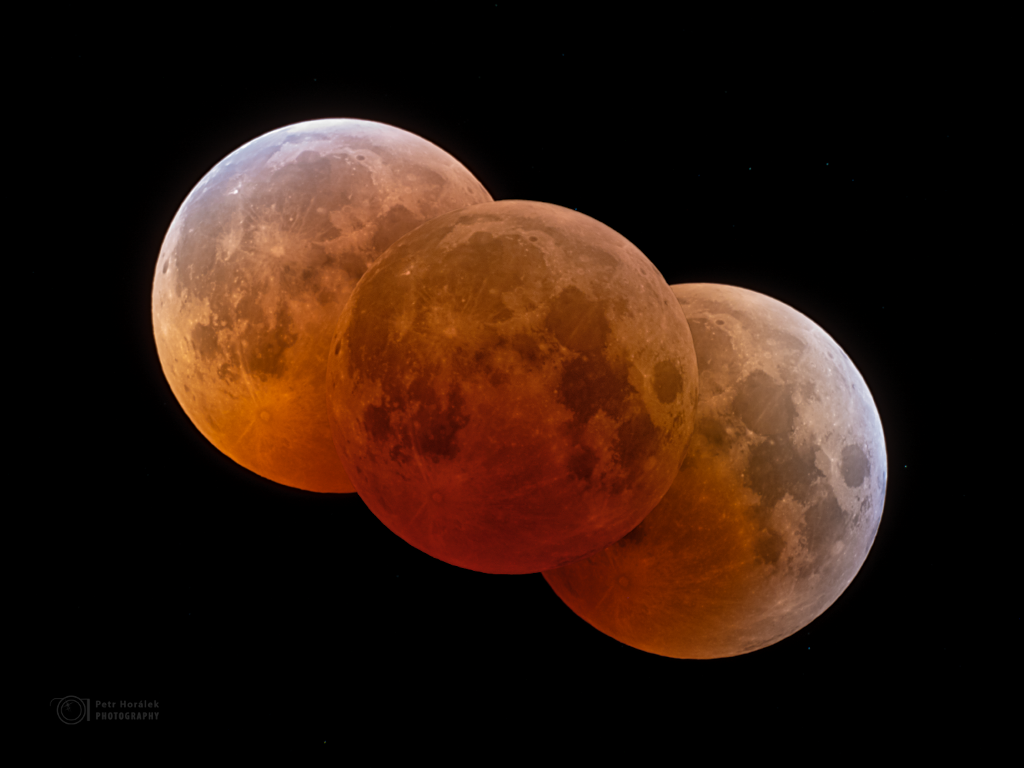안녕하세요, 잡학다식 입니다. 오늘은 과연 나사에서 어떤 방식으로 우주의 형상을 표현해 줄까요?
우선 이미지부터 볼 수 있도록 하겠습니다

해당 사진의 이름은 Eclipse in the City 인데요 우선 NASA에서 공식적으로 발표한 설명들을 확인해 보겠습니다
A darker Moon sets over Manhattan in this night skyscape. The 16 frame composite was assembled from consecutive exposures recorded during the November 8 total lunar eclipse. In the timelapse sequence stars leave short trails above the urban skyline, while the Moon remains immersed in Earth's shadow. But the International Space Station was just emerging from the shadow into the sunlit portion of its low Earth orbit. As seen from New York City, the visible streak of this ISS flyover starts near a star in Taurus and tracks right to left, through the belt of Orion and over Sirius, alpha star of Canis Major. Gaps along the bright trail of the fast moving orbital outpost (and an aircraft flying closer to the horizon) mark the time between individual exposures in the sequence. The trail of bright planet Mars is at the top of the frame. Pleiades star cluster trails are high over the eclipsed Moon and Empire State Building. Lunar Eclipse of November 2022: Notable Submissions to APOD Love Eclipses? (US): Apply to become a NASA Partner Eclipse Ambassador
이번에도 광활한 우주 앞에 인간이 얼마나 작은 존재인지 다시 한번 알게 되는것 같습니다
저는 내일도 더 좋은 사진과 함께 돌아오겠습니다, 그럼 행목한 하루 되시길 바랍니다
'과학상식' 카테고리의 다른 글
| NASA 나사의 오늘의 이미지들 (2022-11-14) (0) | 2022.11.15 |
|---|---|
| NASA 나사의 오늘의 이미지들 (2022-11-13) (0) | 2022.11.14 |
| NASA 나사의 오늘의 이미지들 (2022-11-11) (0) | 2022.11.12 |
| NASA 나사의 오늘의 이미지들 (2022-11-10) (0) | 2022.11.11 |
| NASA 나사의 오늘의 이미지들 (2022-11-09) (0) | 2022.11.10 |

